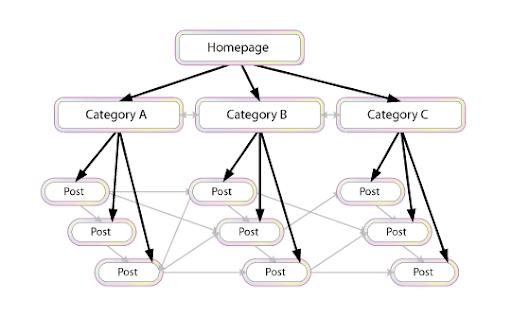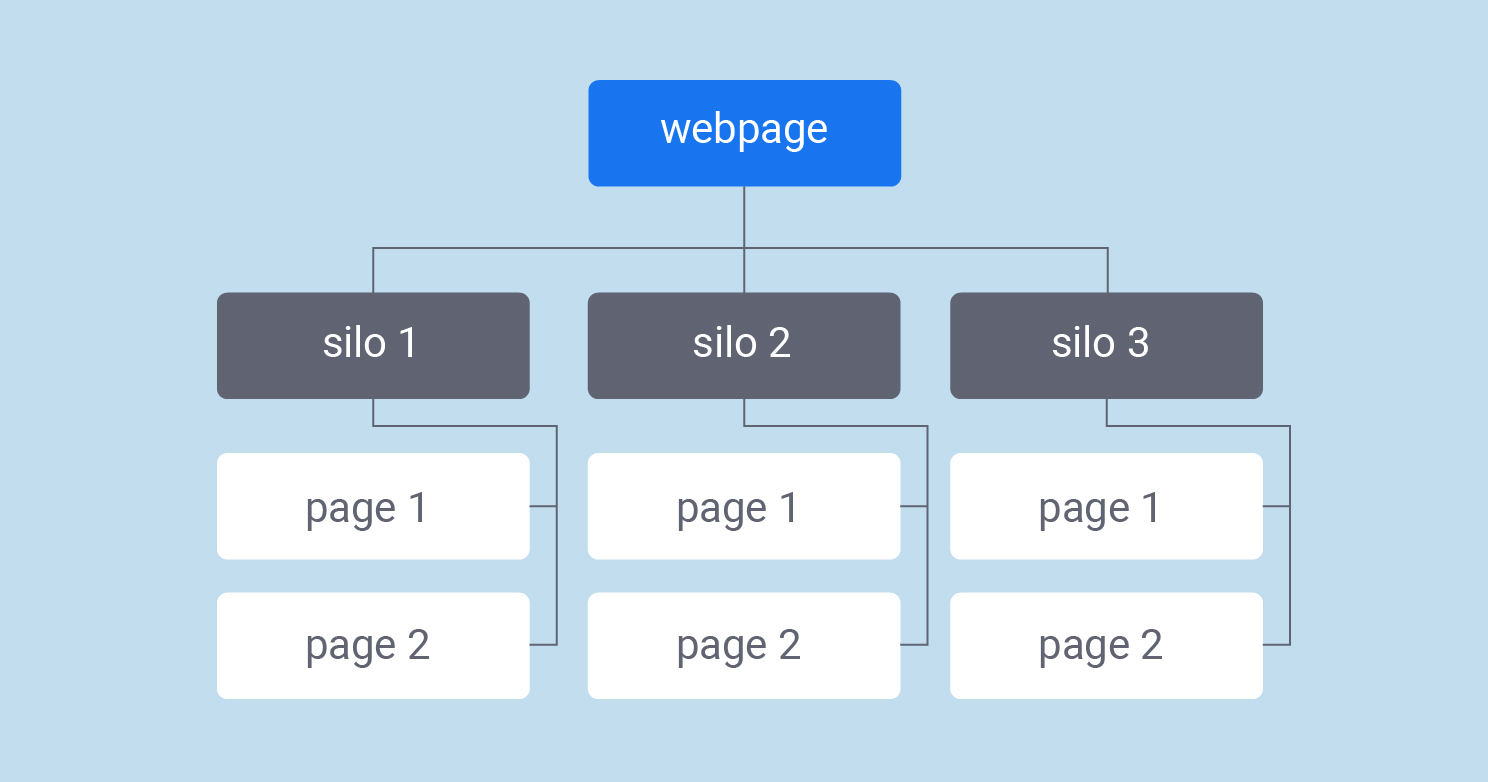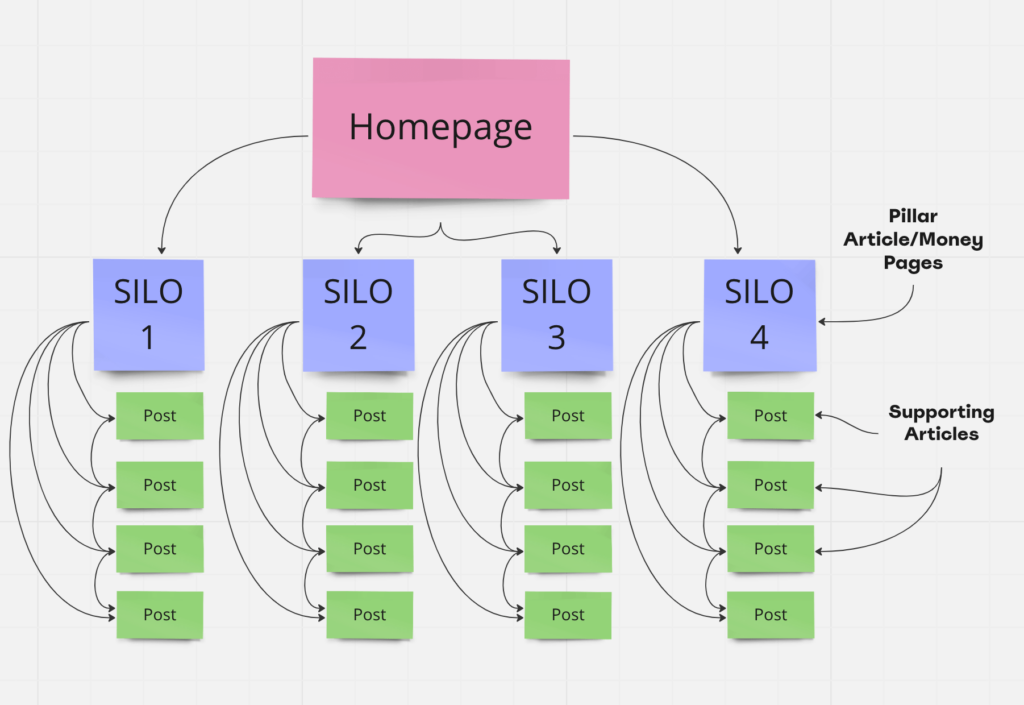Site Architecture for SEO: Silo Structures, URL Optimization, and Internal Linking
Effective site architecture is foundational for SEO, influencing how search engines crawl, index, and rank your content. Three key components—silo structures, URL optimization, and internal linking—work together to create a site that is both user-friendly and search-engine friendly.
Silo Structures
Siloing is a method of organizing website content into distinct, thematically related groups (silos), where each silo focuses on a broad topic and contains all related subtopics and pages. This structure enhances topical relevance, making it easier for search engines to understand the relationships between pages and to recognize your site as an authority on specific subjects.
- Hierarchy: Start with broad categories (e.g., “Recipes”), then break down into subcategories (e.g., “Desserts,” “Main Courses”), and further into specific pages (e.g., “Chocolate Cake,” “Vegetable Lasagna”).
- Internal Linking: Pages within a silo are interlinked, but cross-linking between unrelated silos is minimized. This concentrates “link juice” within each topic cluster, boosting the ranking potential of all pages in the silo.
- Types of Silos: The “Top-Down Recycle Silo” is a common approach, where the homepage links to category pages, which link to subcategory pages, and so on, with lower-level pages linking back up to maintain a cohesive structure.
- Benefits: Silo structures can lead to more landing page visitors, increased relevance for target keywords, and improved rankings for both broad and long-tail queries.
URL Optimization
A clear, logical URL structure is critical for both users and search engines.
- Descriptive and Concise: URLs should reflect the content hierarchy and include relevant keywords. For example,
example.com/recipes/desserts/chocolate-cakeis preferable toexample.com/page123. - Keyword Placement: Place the most important keywords closer to the root of the URL. Avoid keyword stuffing or duplication within URLs.
- Flat Architecture: Keep the URL structure as flat as possible—no page should be more than a few clicks from the homepage. This improves crawlability and user experience.
- Avoid Dynamic Parameters: Use static, readable URLs instead of dynamic ones with session IDs or unnecessary parameters.
Internal Linking
Internal links guide both users and search engines through your site, distributing page authority and reinforcing topical relevance.
- Strategic Placement: Link related pages within the same silo to strengthen topic clusters. Use descriptive anchor text that reflects the destination page’s content.
- Navigation: Ensure your main navigation menu is clear and limited to 7–8 top-level categories for usability. Use breadcrumbs to show users their location within the site hierarchy.
- Reciprocal Linking: In a silo structure, lower-level pages should link back to their parent category or the homepage, creating a closed loop that helps distribute link equity throughout the silo.
- Avoid Orphan Pages: Every page should be accessible via internal links and should link to at least one other relevant page on your site.
Best Practices Summary Table
| Component | Best Practice | SEO Benefit |
|---|---|---|
| Silo Structure | Group content by topic, minimize cross-links | Topical relevance, higher rankings |
| URL Optimization | Use descriptive, keyword-rich, flat URLs | Better crawlability, user experience |
| Internal Linking | Link within silos, use descriptive anchors | Distributes authority, guides users |
Implementation Steps
- Audit Existing Content: Identify and organize content into logical categories and subcategories.
- Plan Hierarchy: Design a silo structure that reflects your content strategy.
- Optimize URLs: Rewrite URLs to be descriptive and hierarchical.
- Implement Internal Links: Connect related pages within each silo, and ensure no page is orphaned.
- Monitor and Iterate: Use analytics to identify gaps or opportunities for further optimization.
By thoughtfully combining silo structures, URL optimization, and strategic internal linking, you create a site architecture that supports both SEO performance and a positive user experience.





